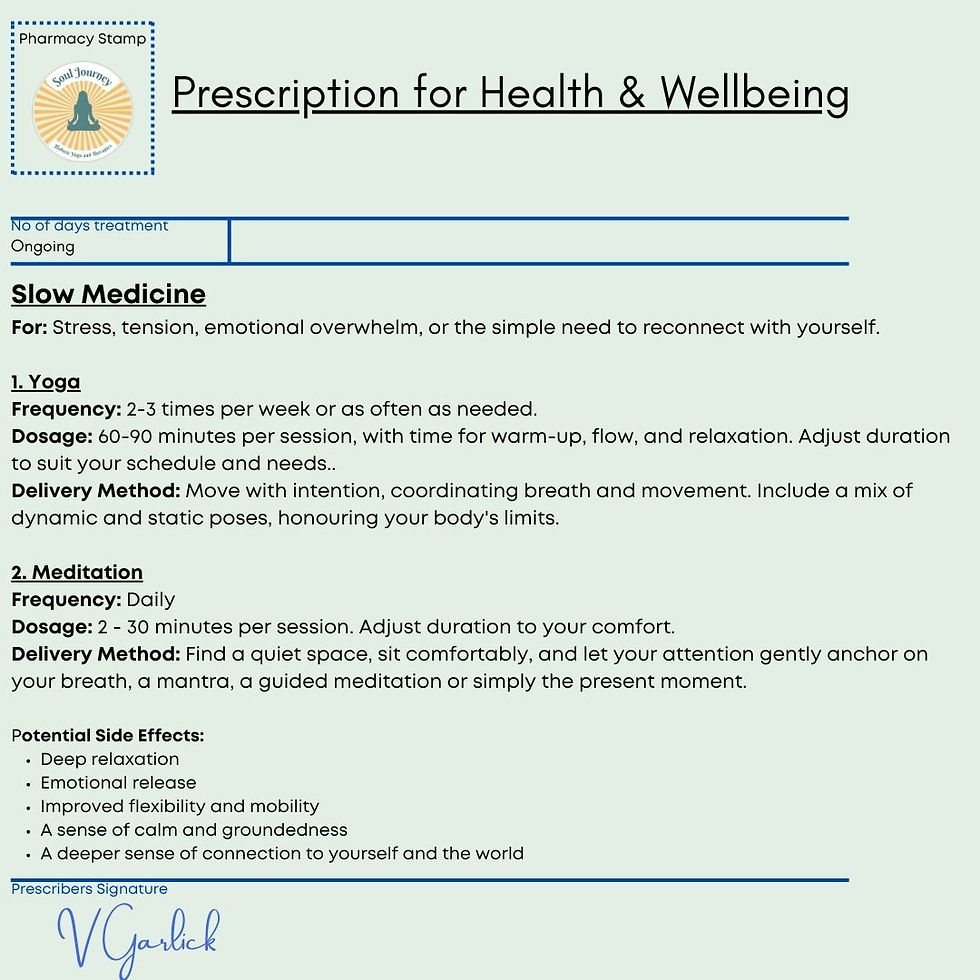In a world driven by quick fixes, instant gratification, and the constant hum of busyness, it’s no wonder we yearn for something slower, deeper, and more sustainable. Enter yoga and meditation—ancient practices that modern medicine is increasingly recognising as slow medicine for the body, mind, and soul.
While we often think of medicine as something external, yoga and meditation teach us that the body itself is a powerful healer when given the right tools and time. These practices gently realign us with our natural rhythms, helping to manage stress, improve physical health, and cultivate emotional well-being.
Prevention: The True Power of Yoga and Meditation
Yoga and meditation aren’t just about managing existing health conditions—they are powerful tools for prevention. A growing body of research highlights their role in reducing the risk of chronic diseases and fostering resilience against stress-related illnesses.
For example, studies have shown that yoga improves cardiovascular health by lowering blood pressure, enhancing cholesterol levels, and reducing stress—all of which significantly lower the risk of heart disease.
Additionally, meditation promotes emotional regulation, which can reduce the risk of anxiety and depression while improving overall mental resilience. Regular meditation practice also strengthens the immune system, helping the body fend off illnesses before they take hold.
By improving physical function, increasing flexibility and strength, and fostering mental clarity, these practices build a solid foundation for long-term health.
Doctors are increasingly prescribing yoga and meditation as preventative measures for these reasons, recognising their ability to create lasting change that traditional approaches often overlook

The National Institute for Health and Care Excellence (NICE) in the UK has even included mindfulness as a treatment option for depression. Meanwhile, programmes like social prescribing are encouraging GPs to refer patients to yoga and mindfulness classes as part of a broader approach to health.
Why Slow Medicine Works
The beauty of yoga and meditation lies in their simplicity and accessibility. They ask only for your time and attention—a commitment to showing up for yourself. As you settle into a yoga pose or sit with your breath in meditation, you activate the body’s parasympathetic nervous system, sometimes called the “rest and digest” mode. This is where healing begins.
Unlike "fast medicine", which often targets symptoms, slow medicine looks at the whole person. Yoga and meditation help us tune into our bodies, uncover the root causes of imbalance, and find lasting solutions.
Practical Ways to Embrace Yoga and Meditation
Ready to begin? Here are some simple steps to bring the healing power of slow medicine into your life:
1. Start Small: Begin with 10 minutes of meditation or a short yoga flow each day. Consistency is more important than duration.
2. Listen to Your Body: Choose practices that feel nourishing. A gentle yoga class or a gentle body scan meditation can be transformative.
3. Seek Guidance: Join a yoga class or meditation group to build community and accountability.
4. Embrace Slowness: Resist the urge to rush through your practice. Instead, focus on being fully present.

Yoga and Meditation as Everyday Medicine
Imagine a world where self-care is as valued as treatment—where yoga mats and meditation cushions sit beside stethoscopes as symbols of health. This isn’t some far-off dream. It’s happening now, with yoga and meditation increasingly being prescribed not as luxuries, but as necessities.
Let’s honour these practices as slow medicine, not only for when we’re unwell but as an ongoing commitment to our own well-being. Healing doesn’t have to be hurried; sometimes, the most profound transformations come when we choose to slow down.
Take a breath. Roll out your mat. Begin your journey into slow medicine today.





Comments